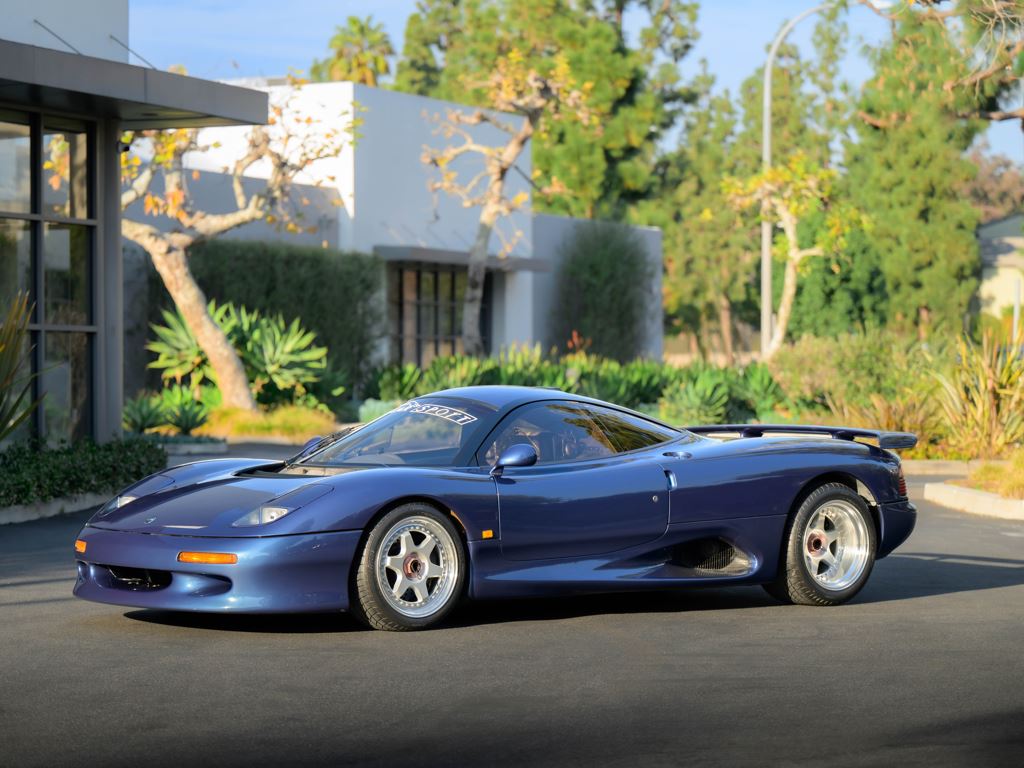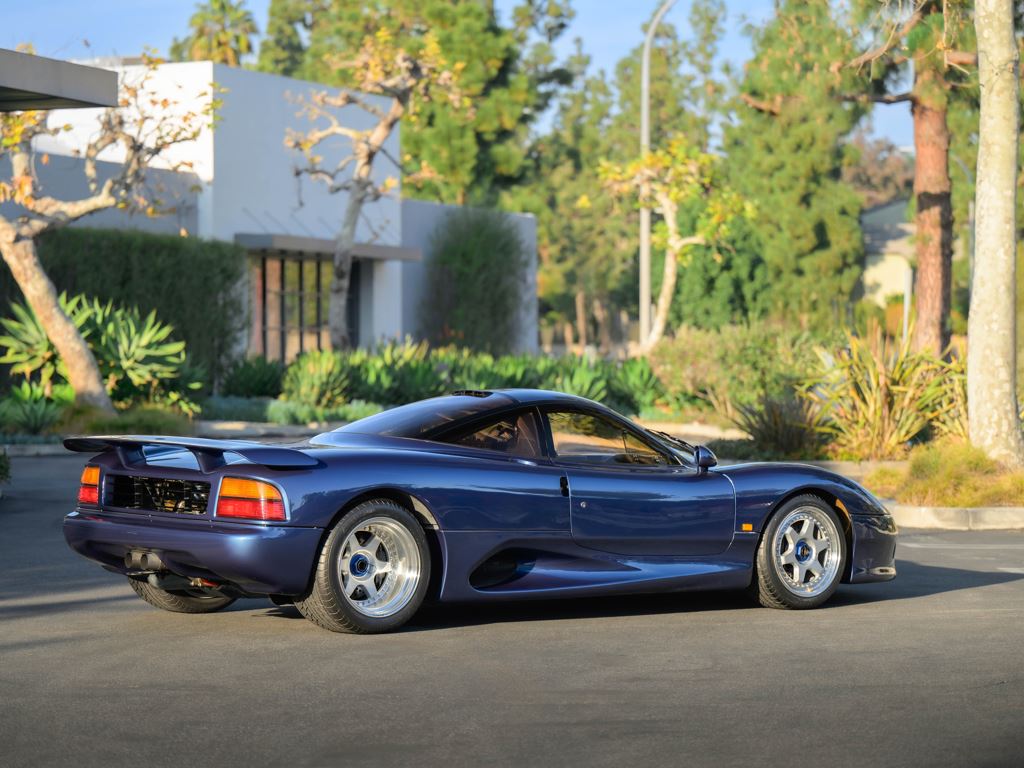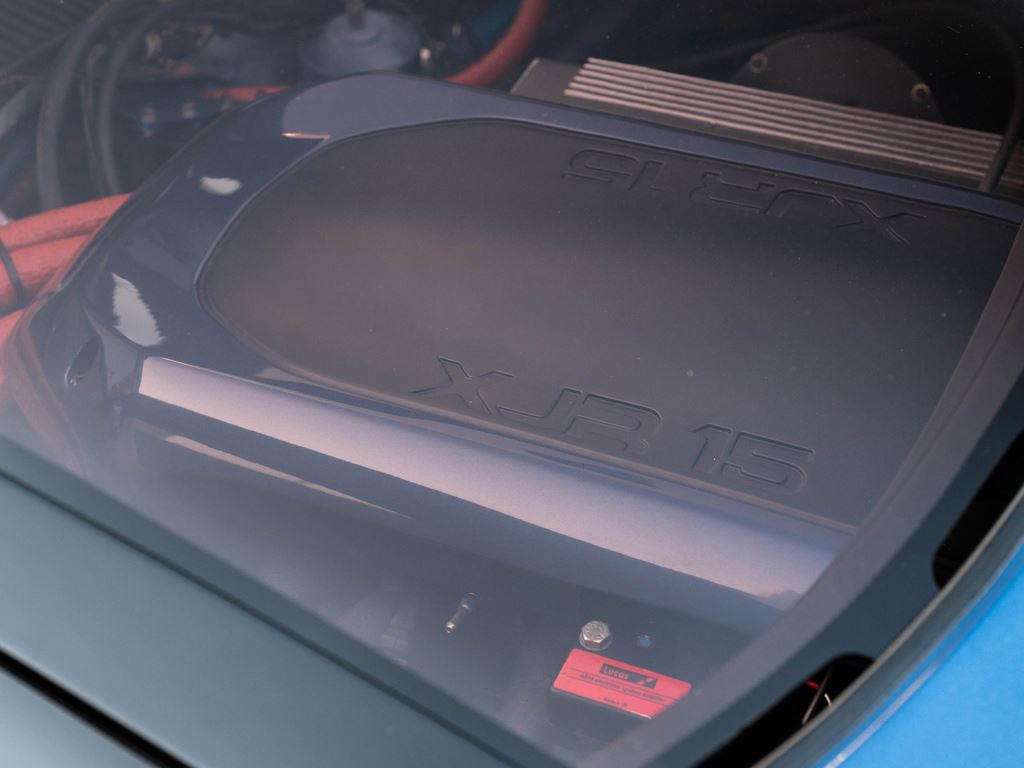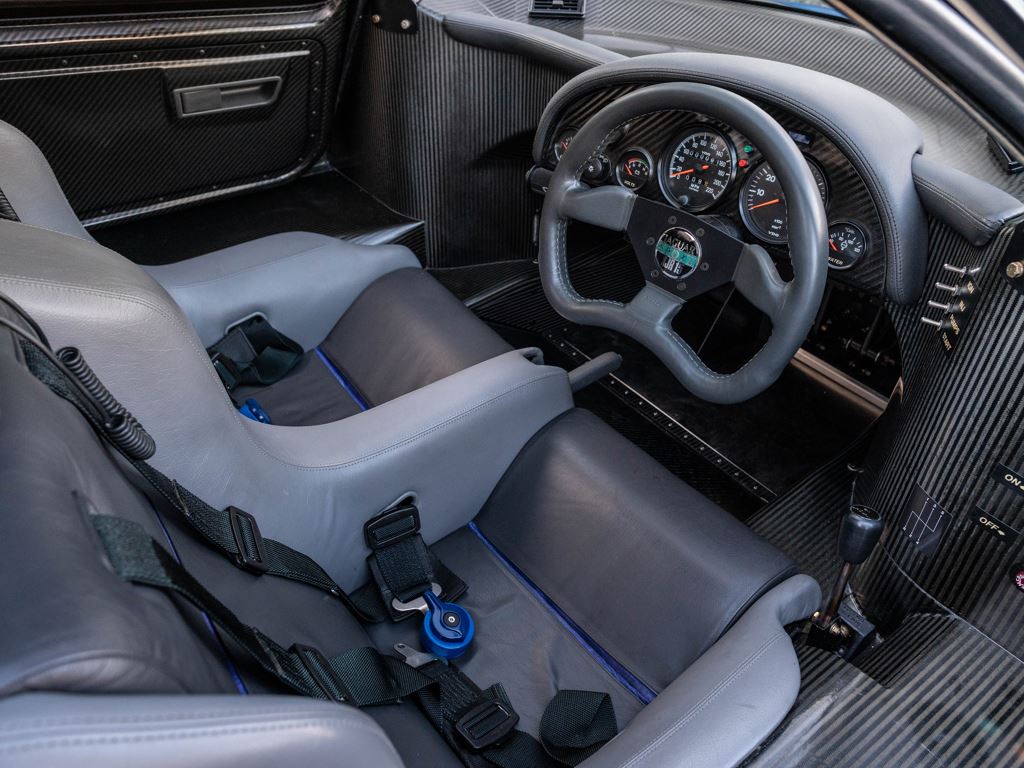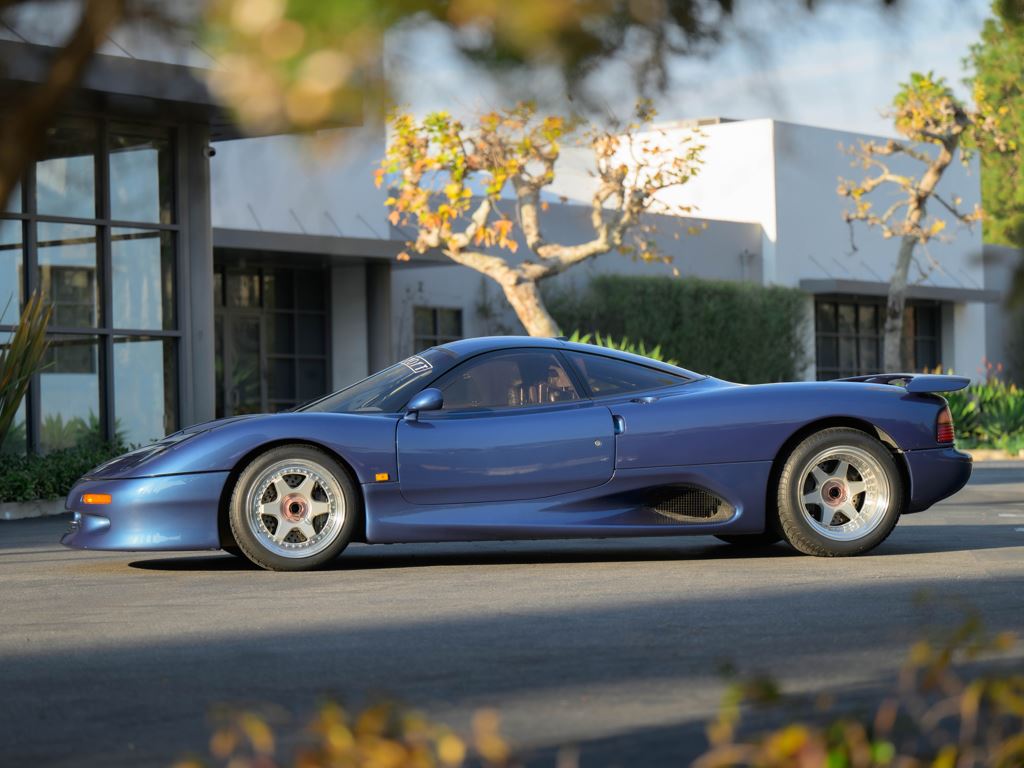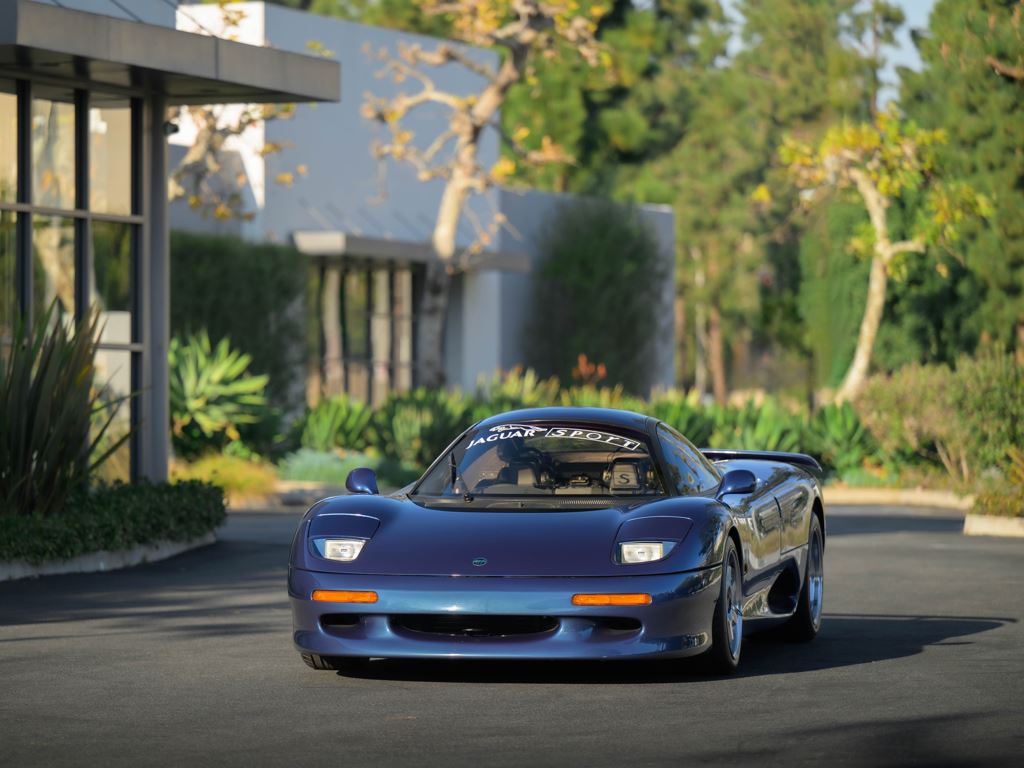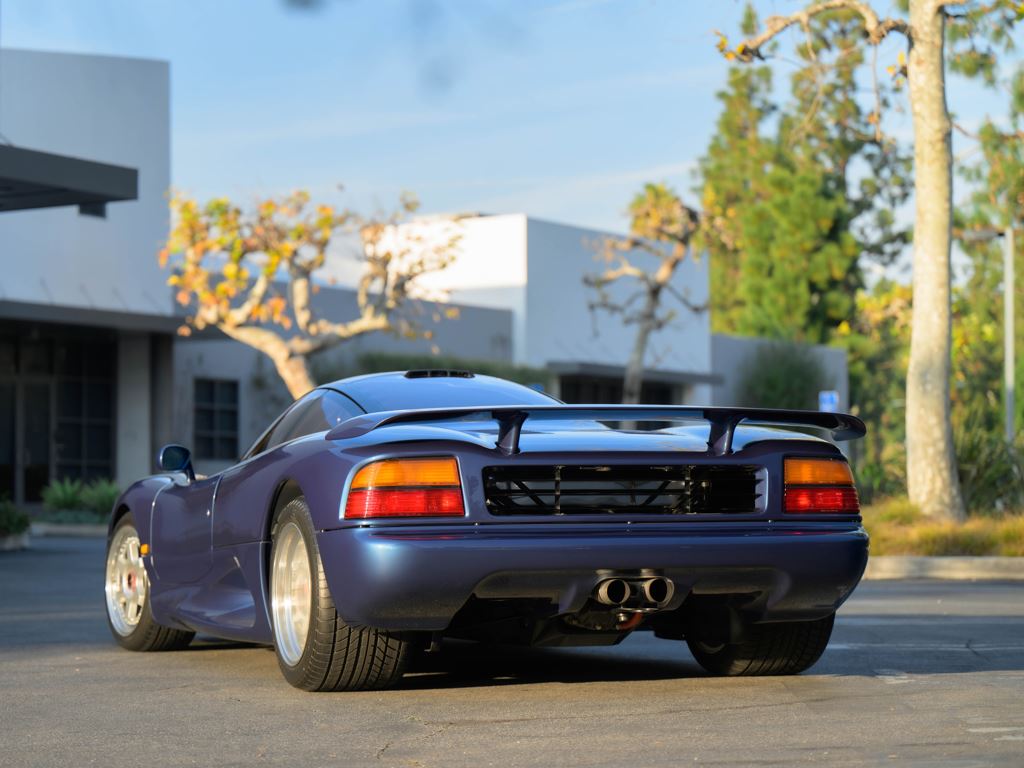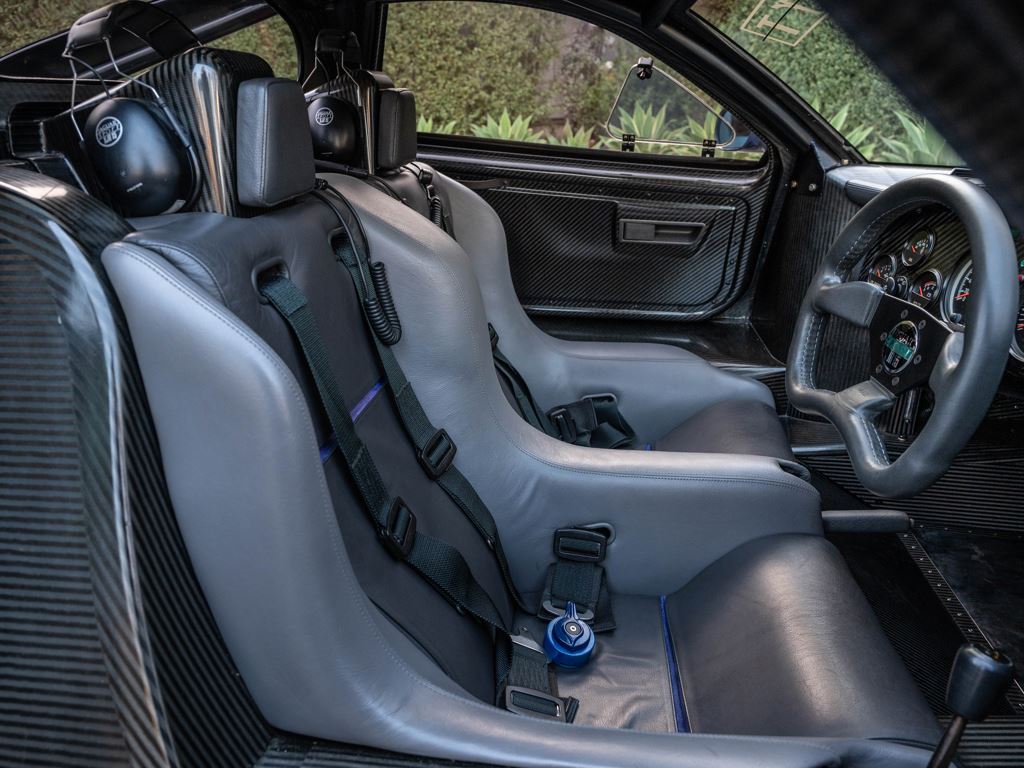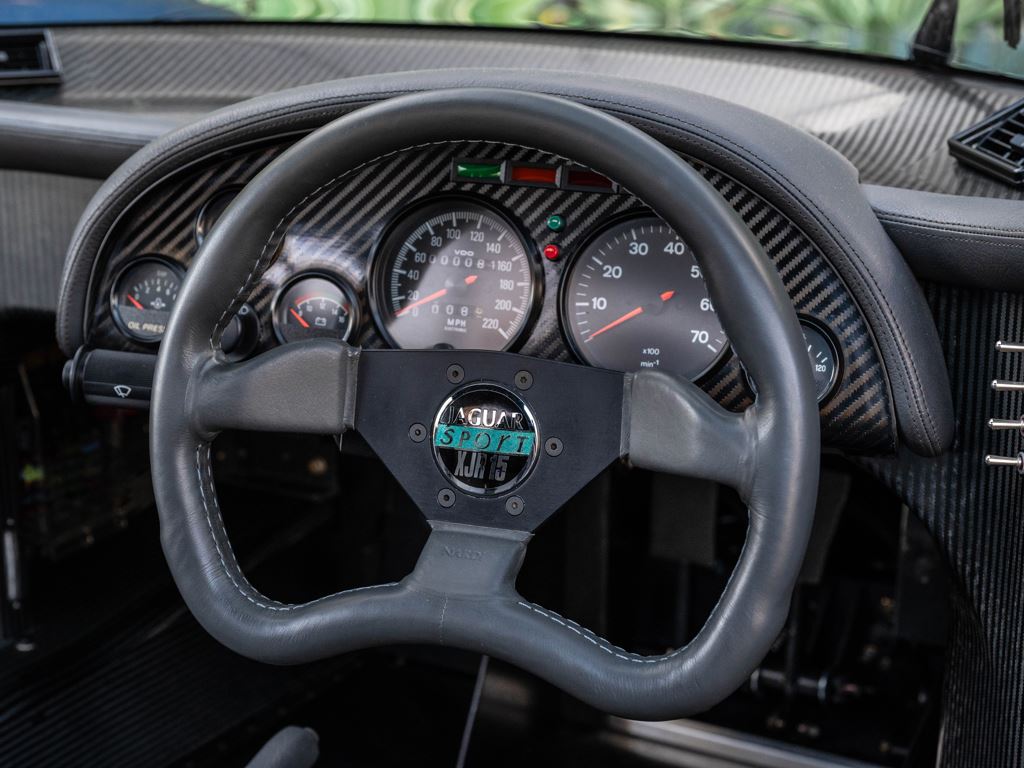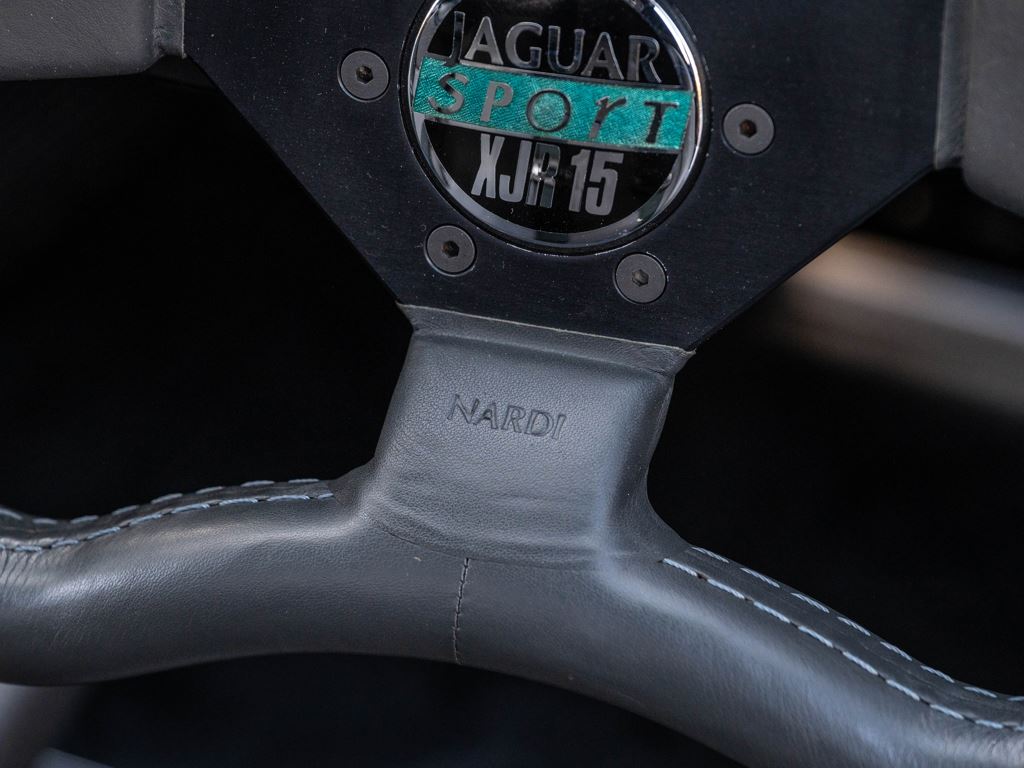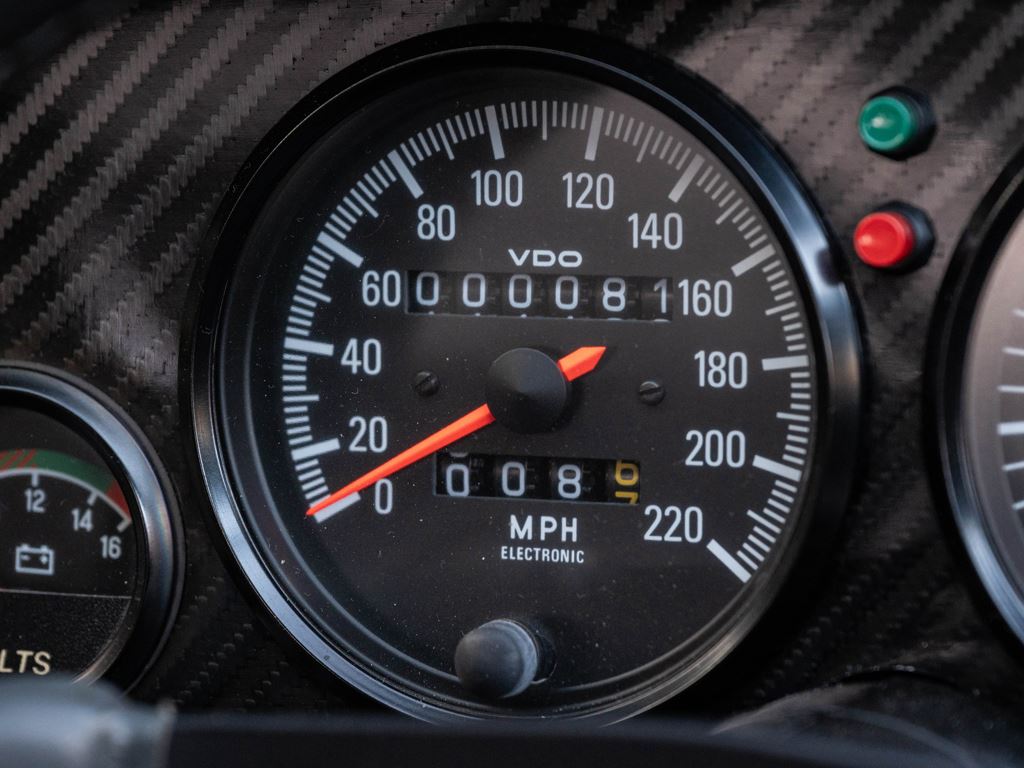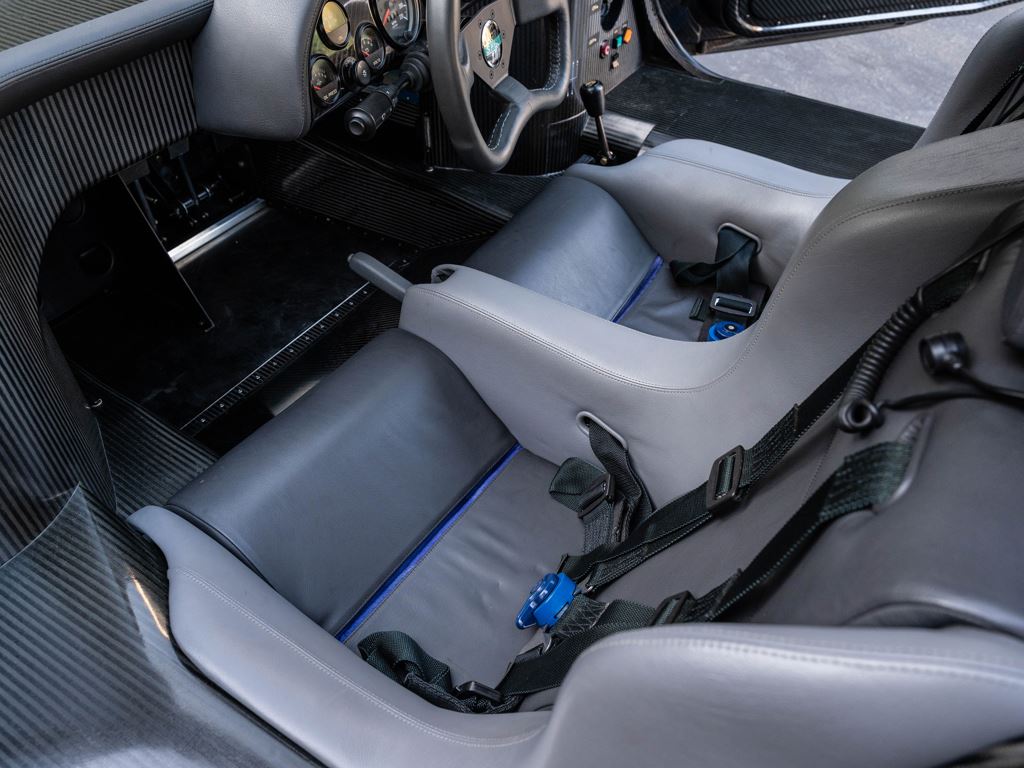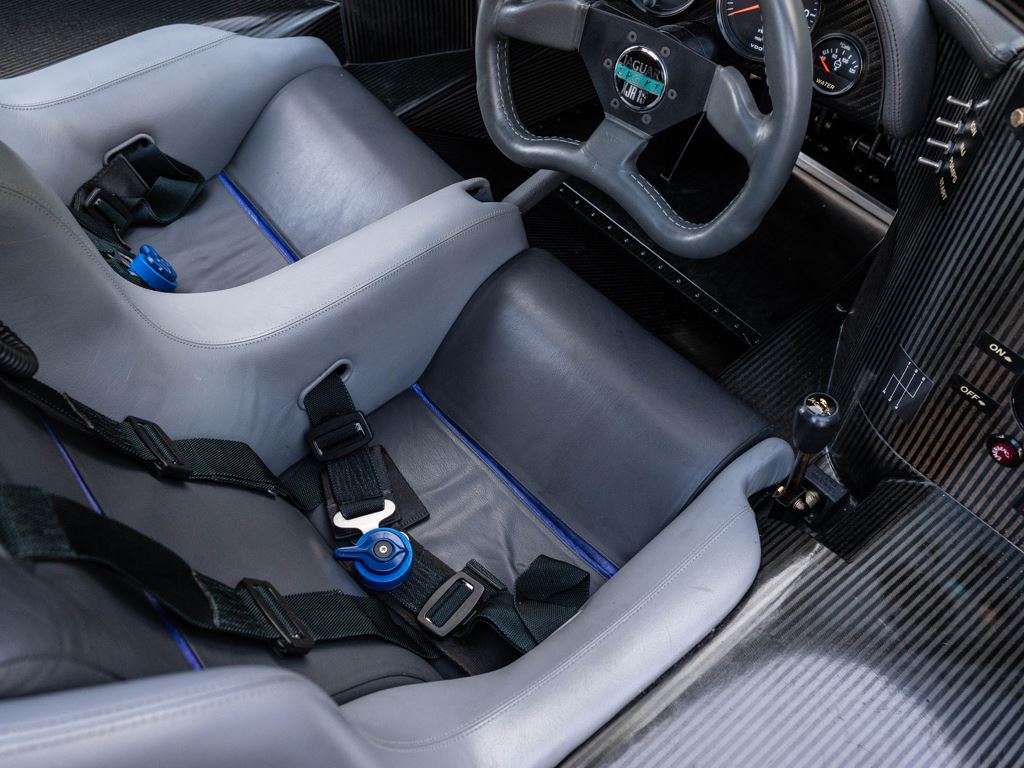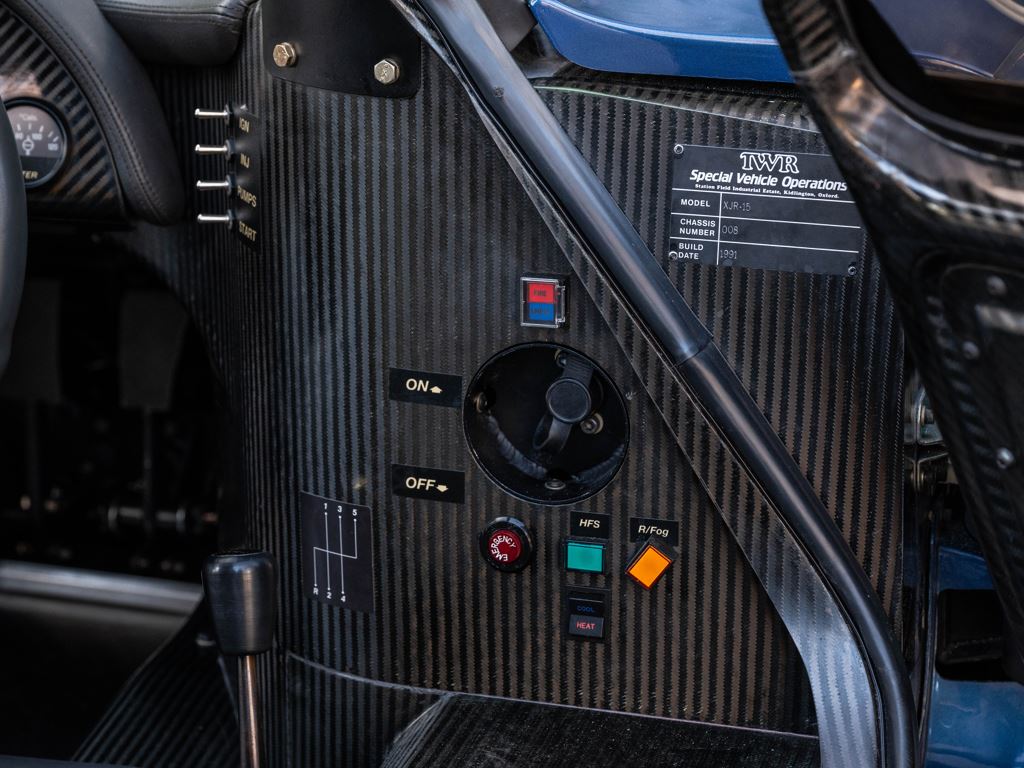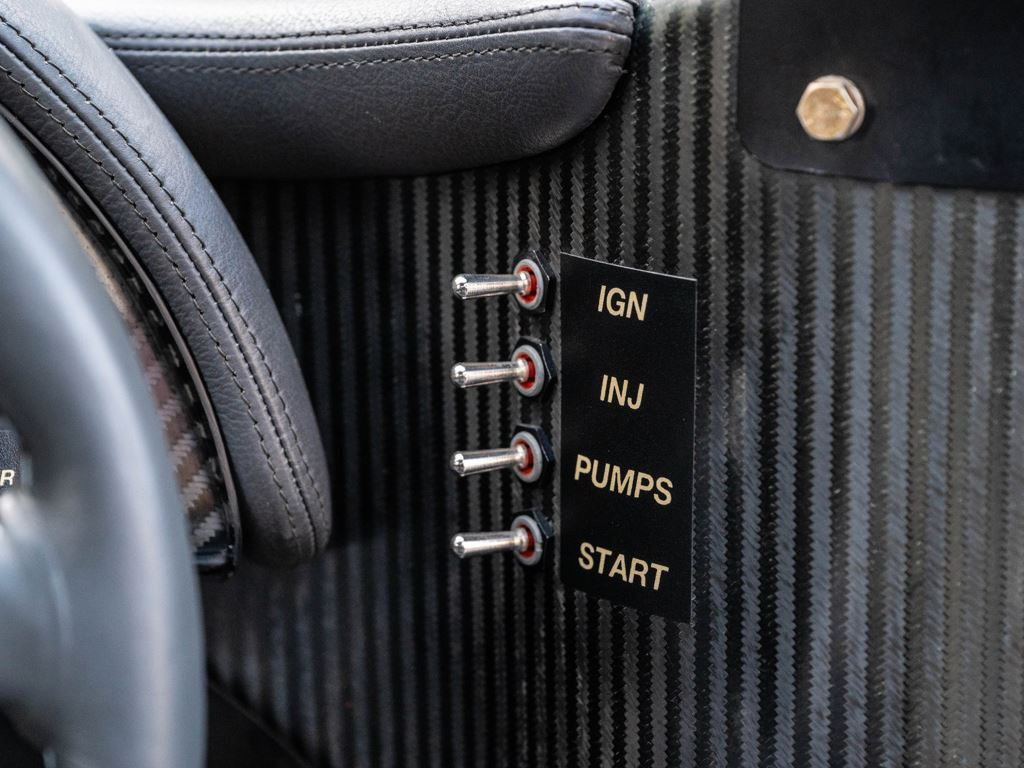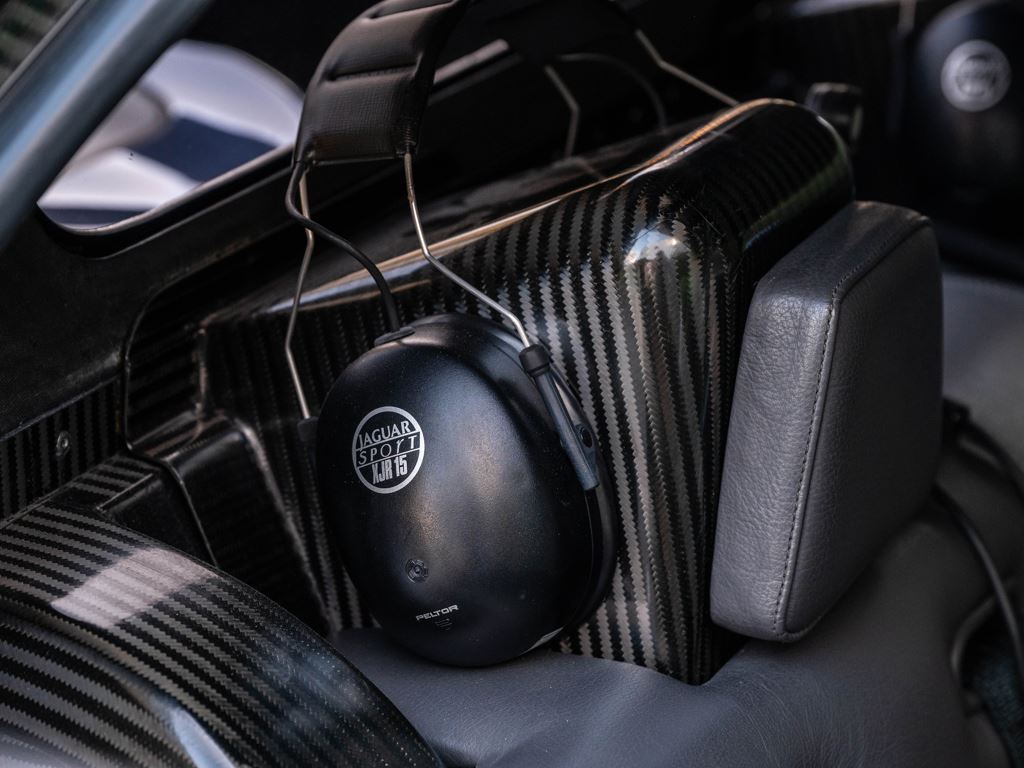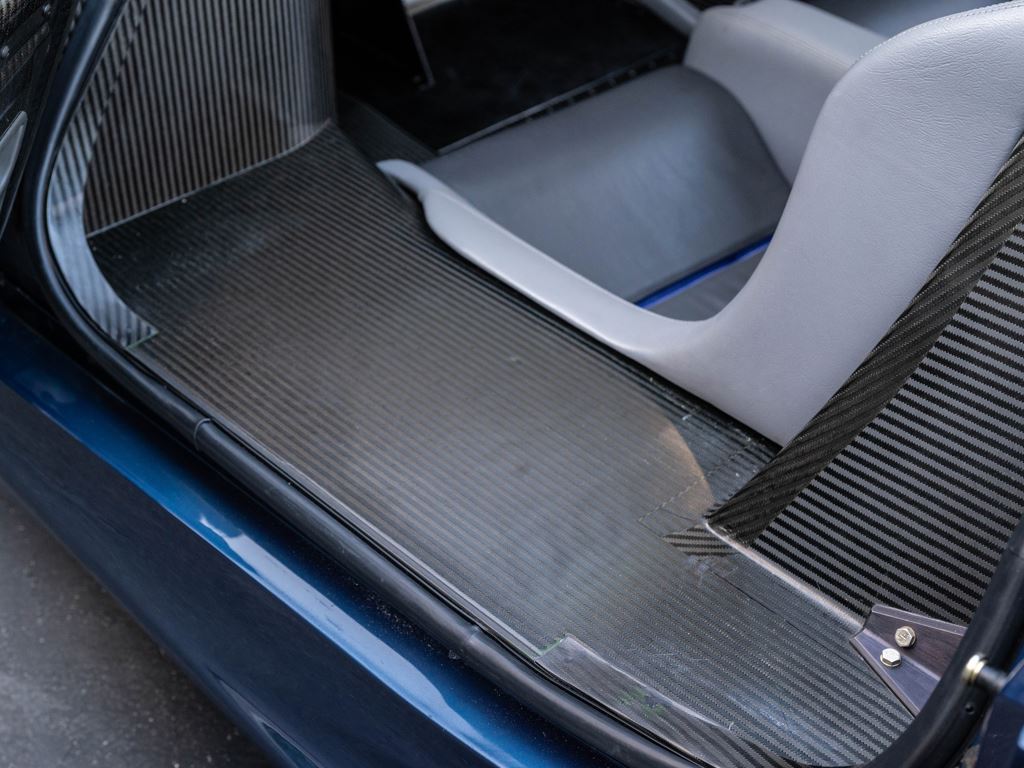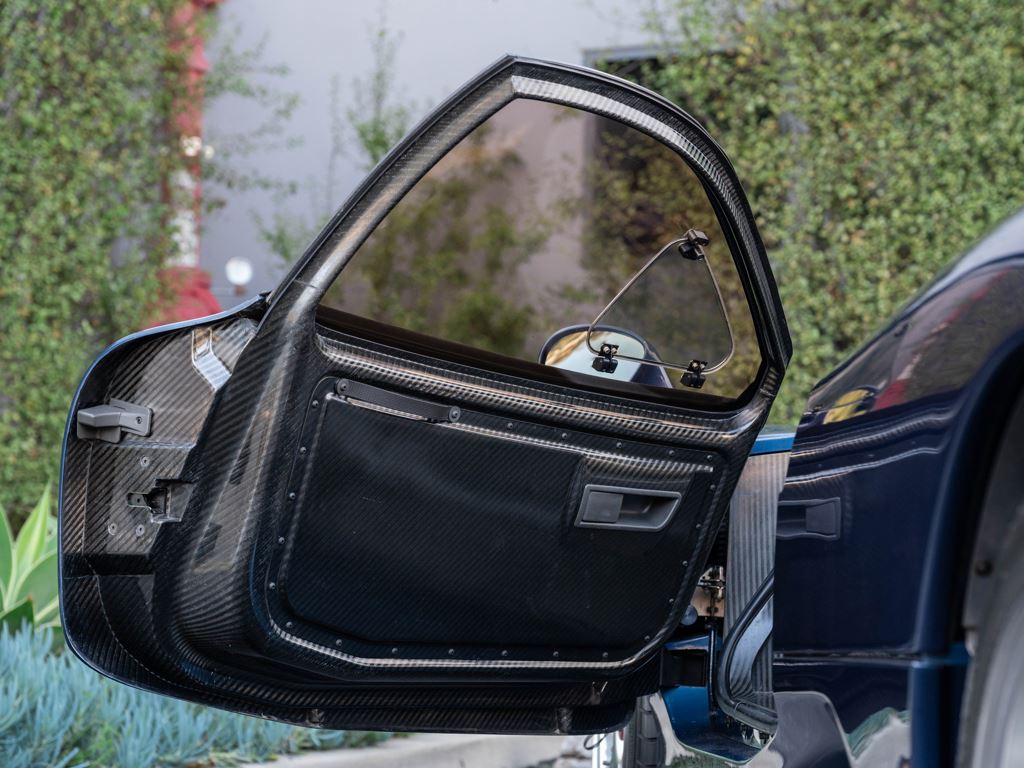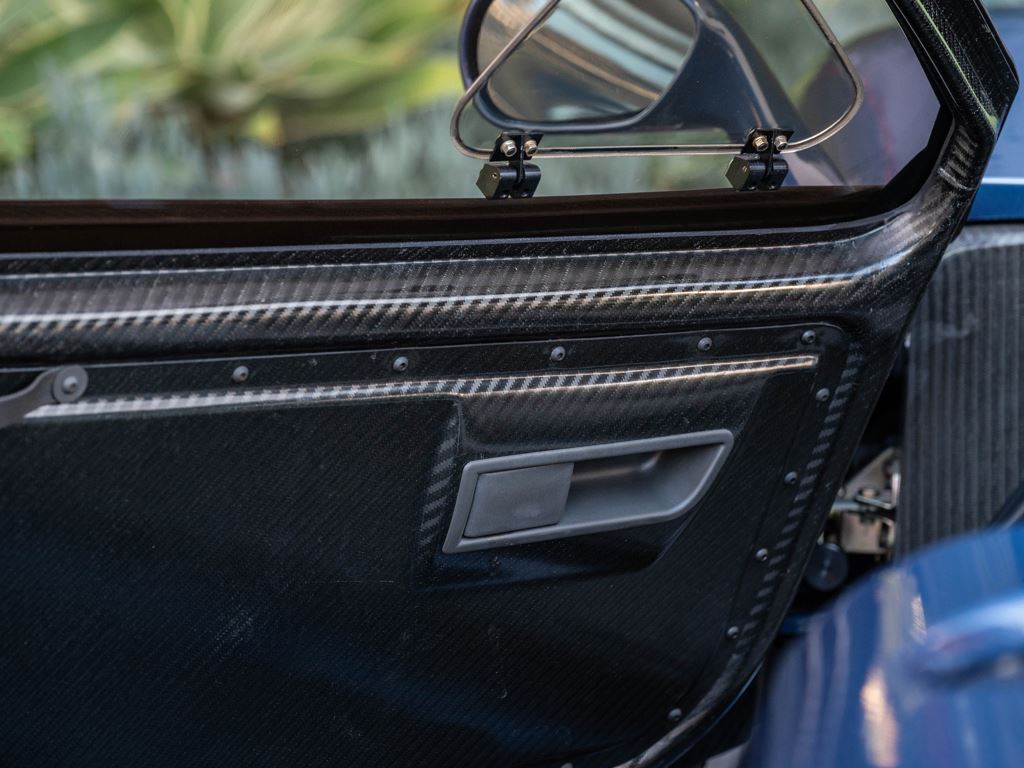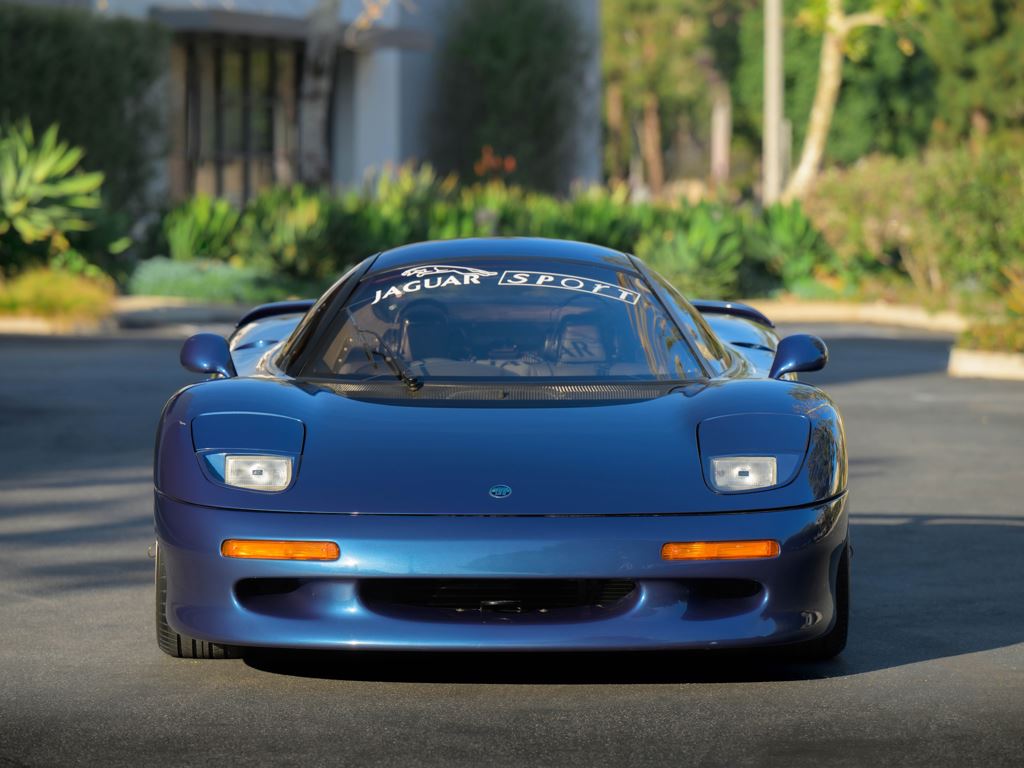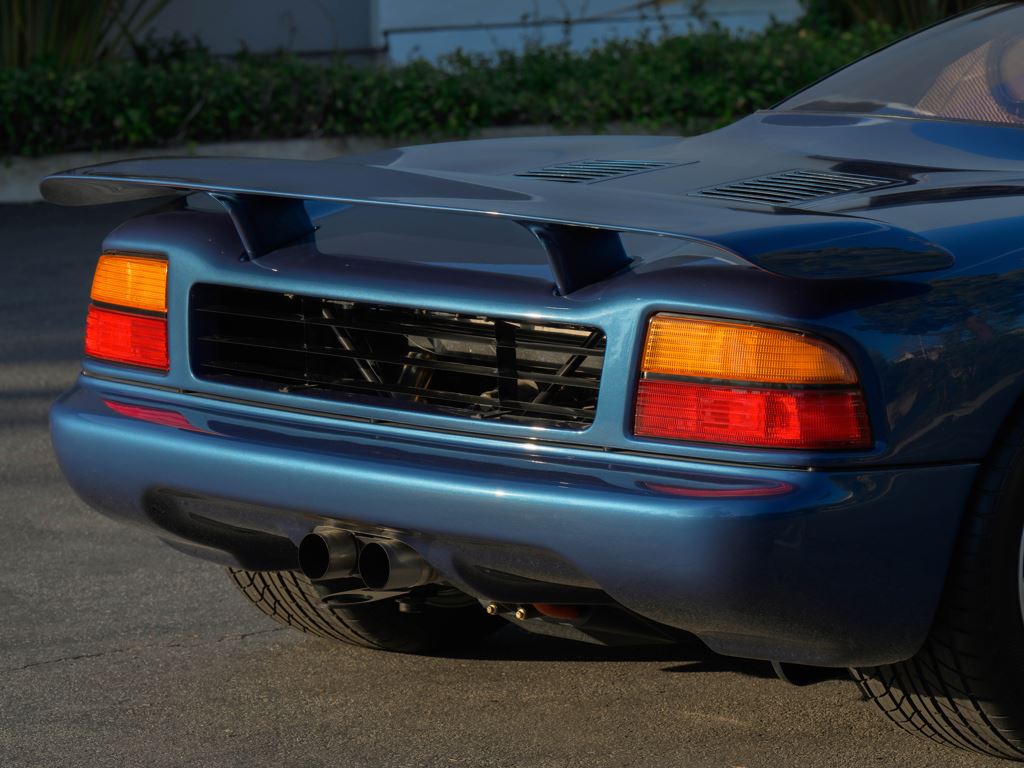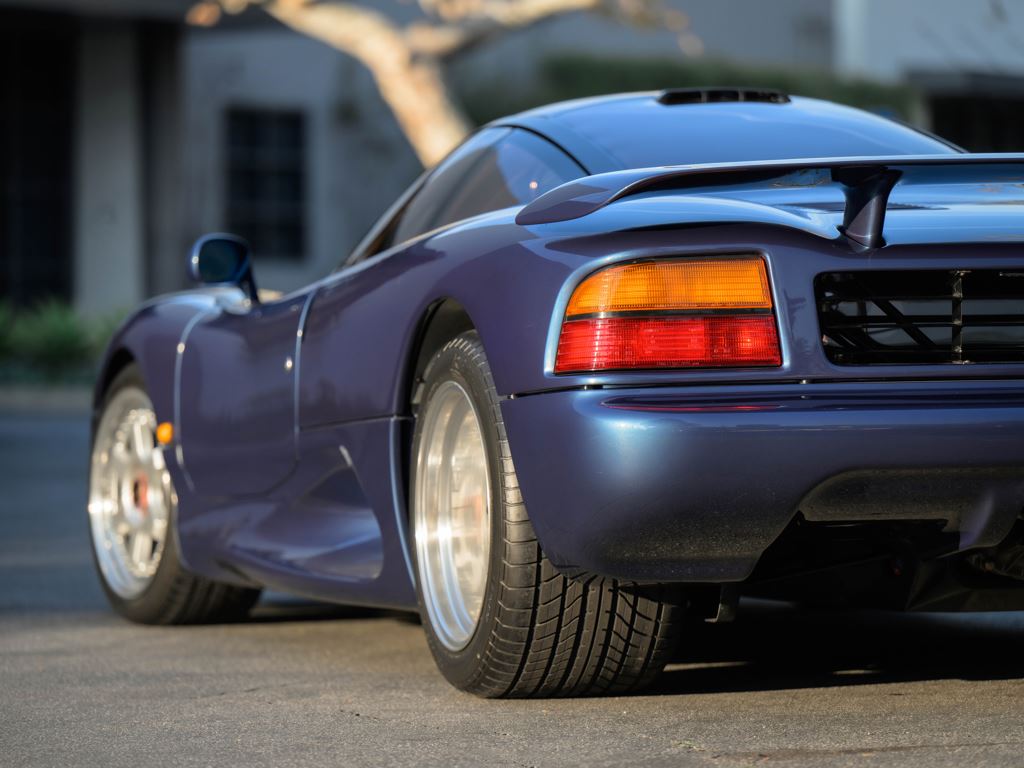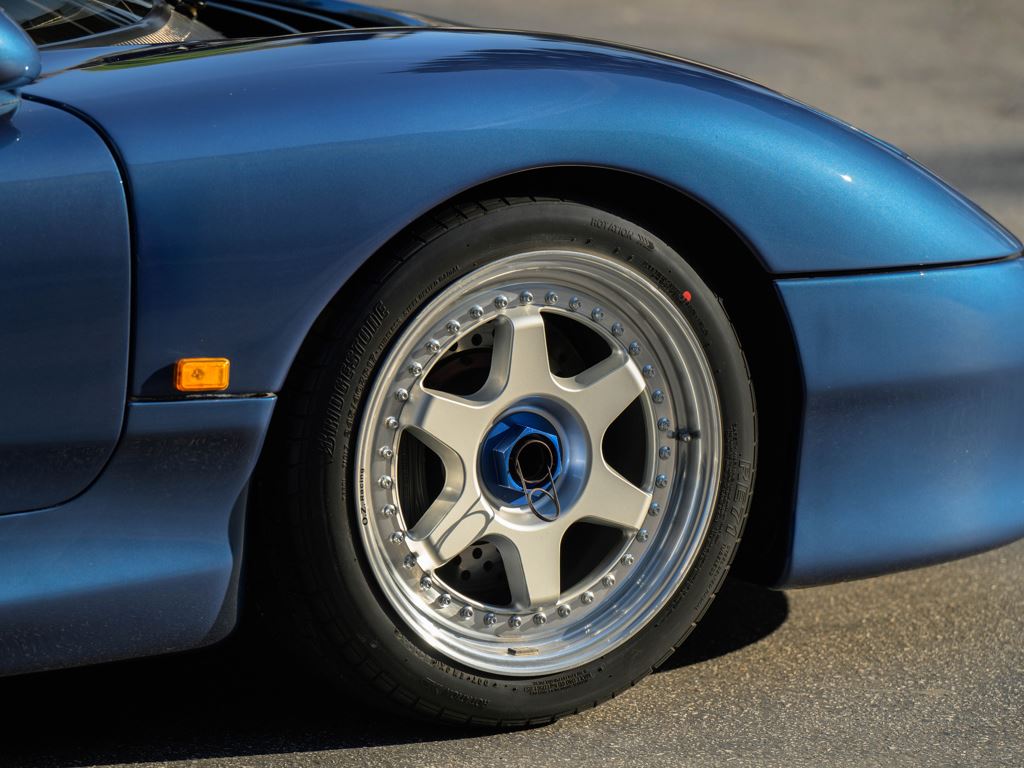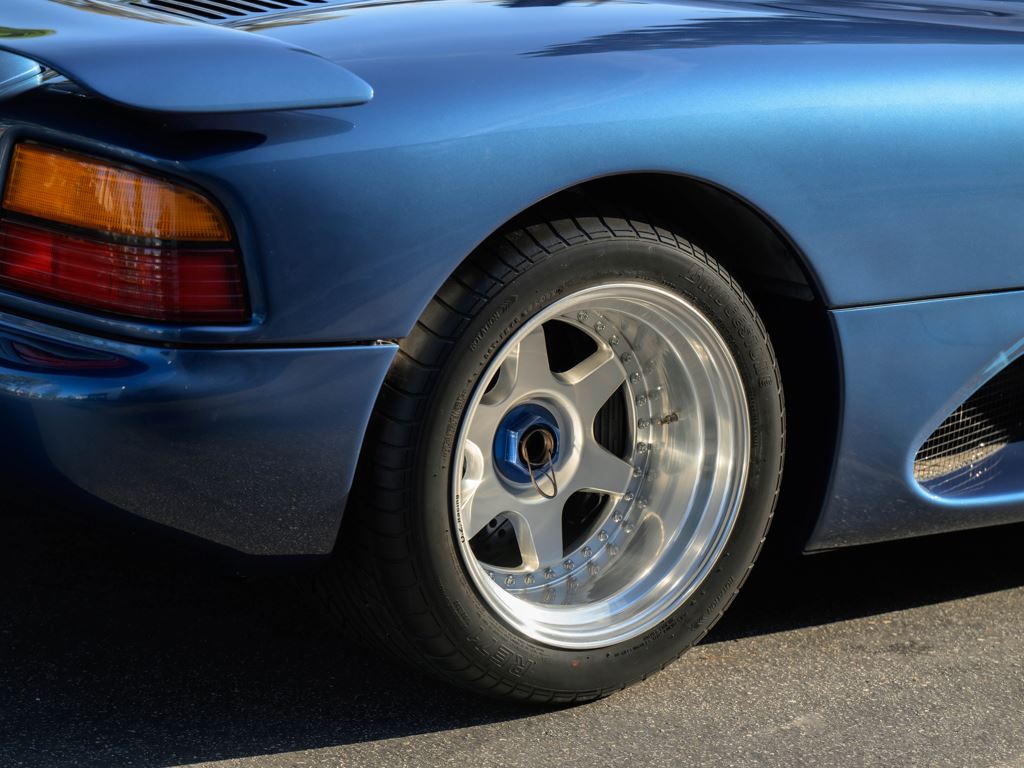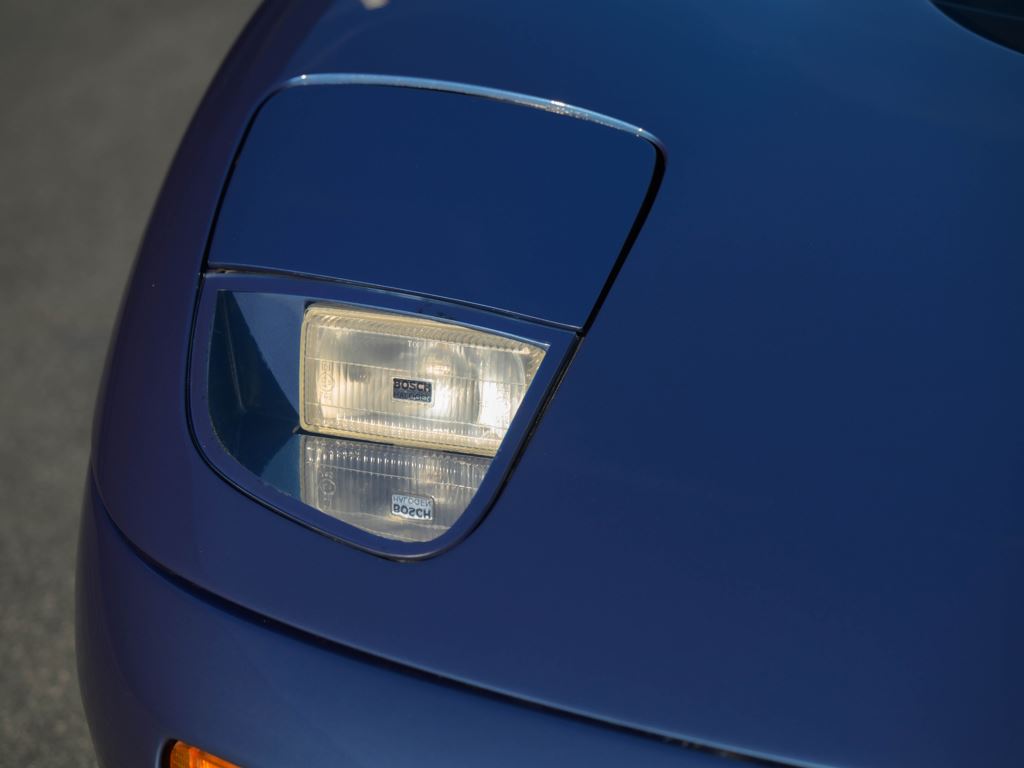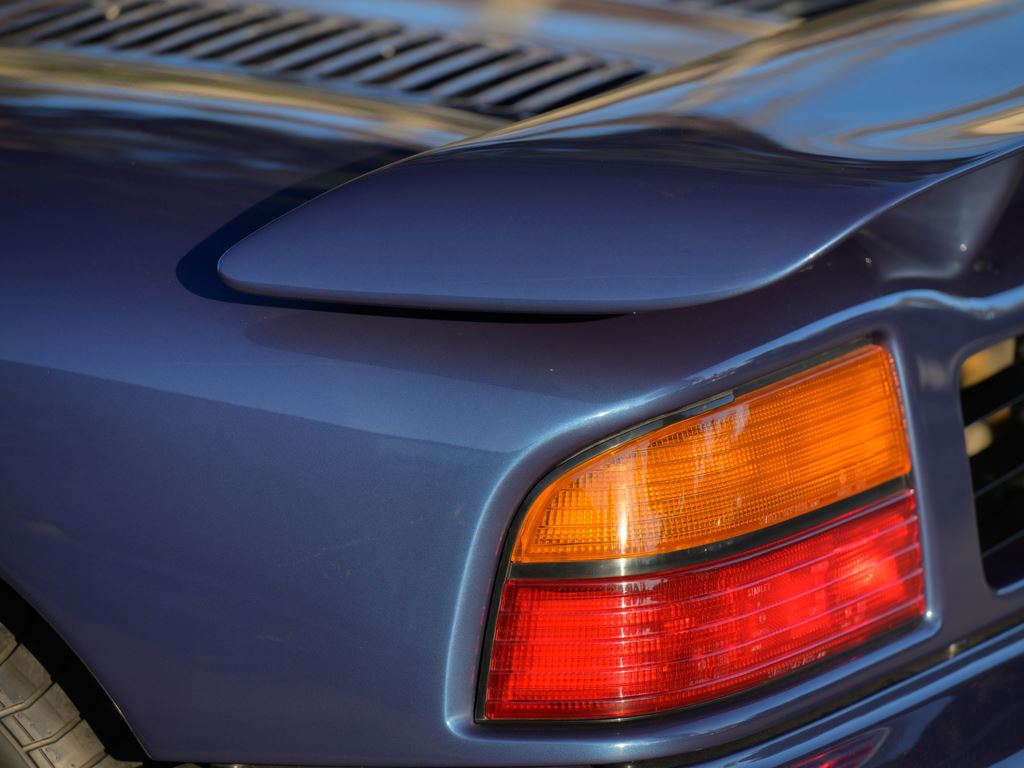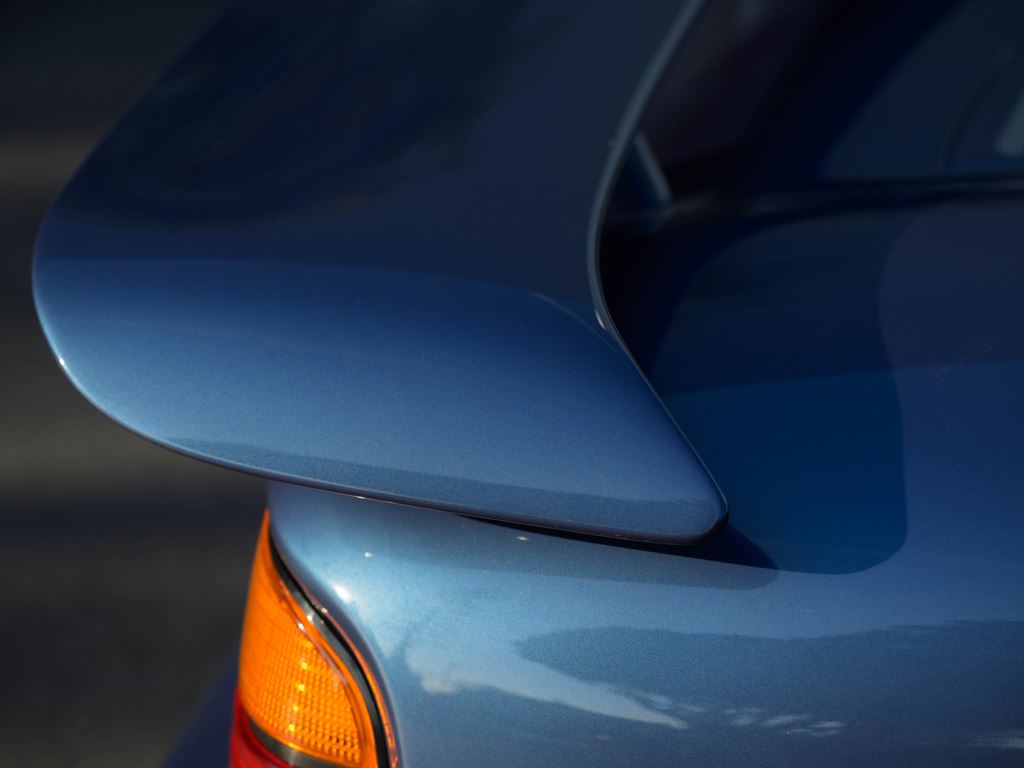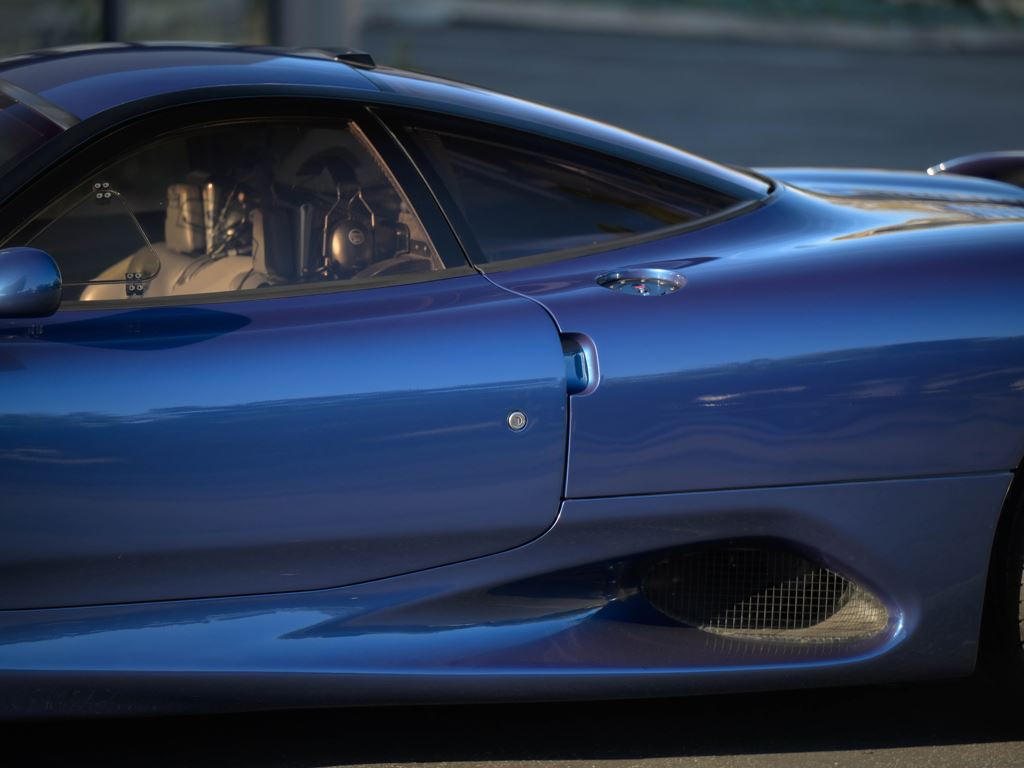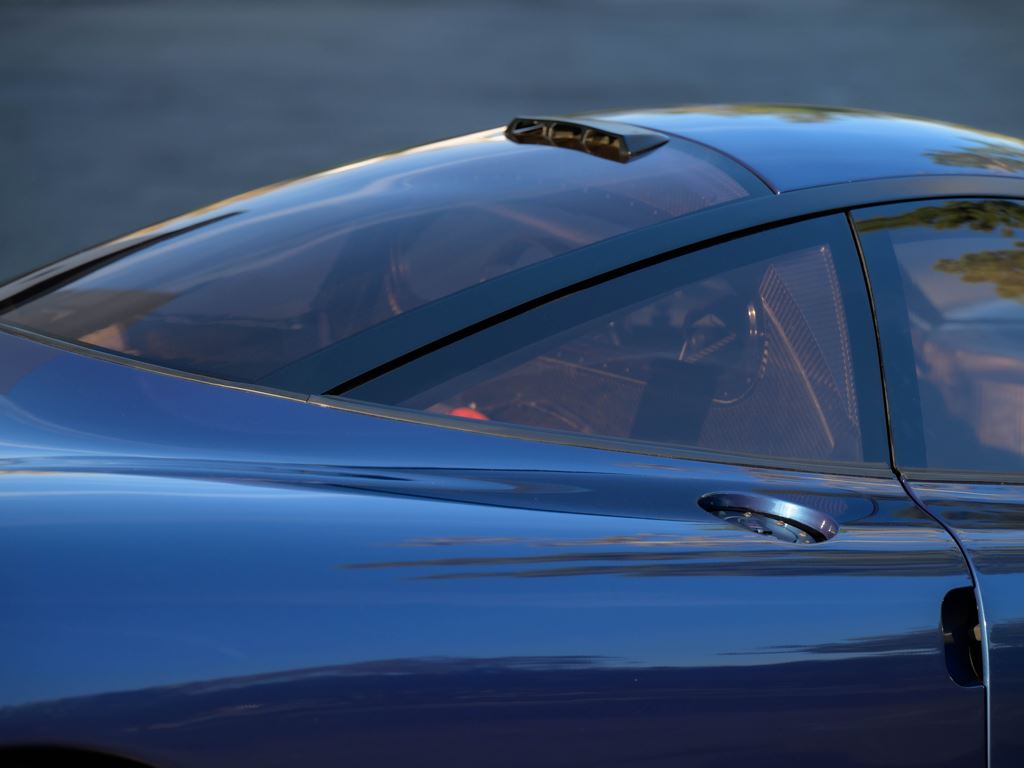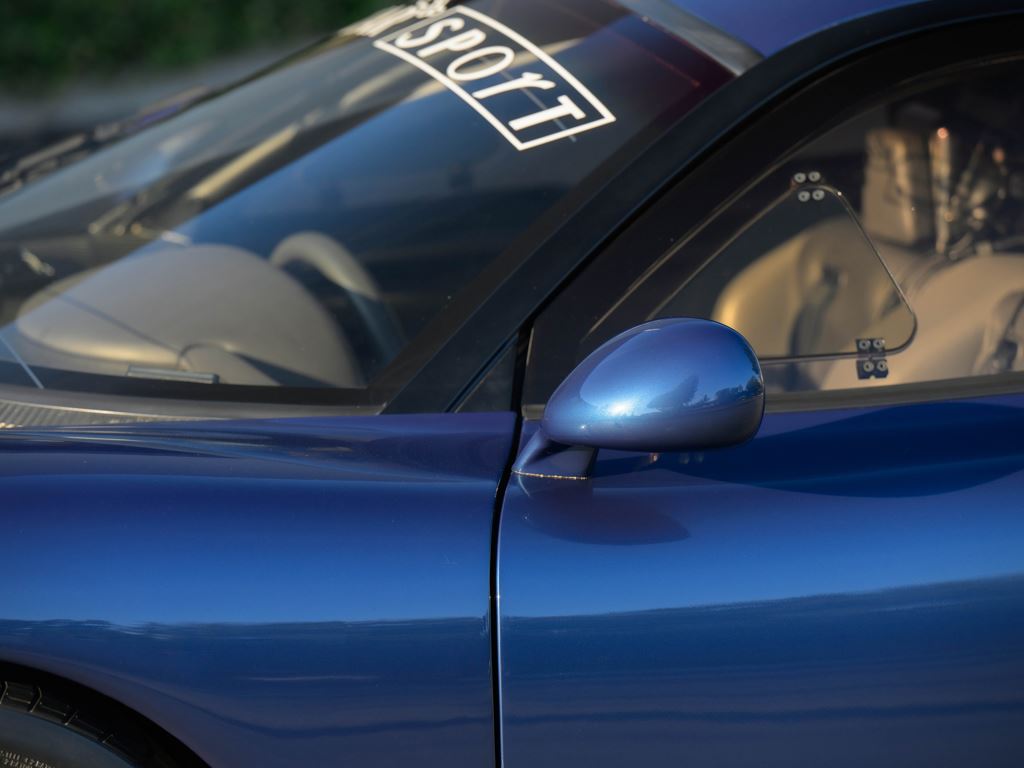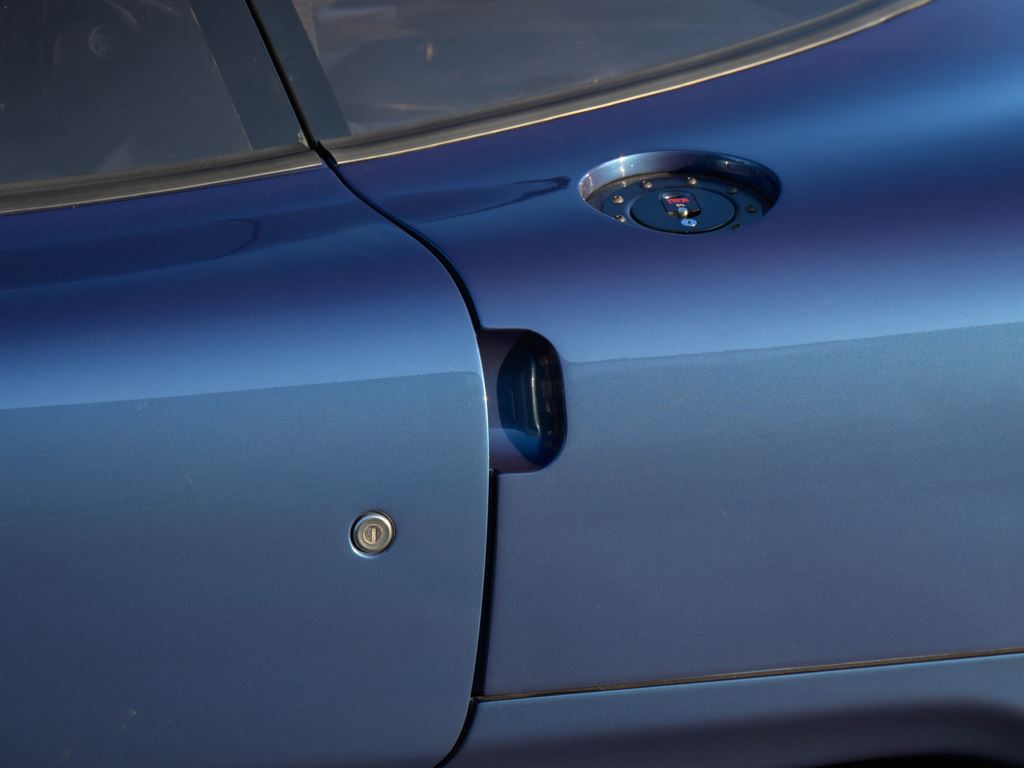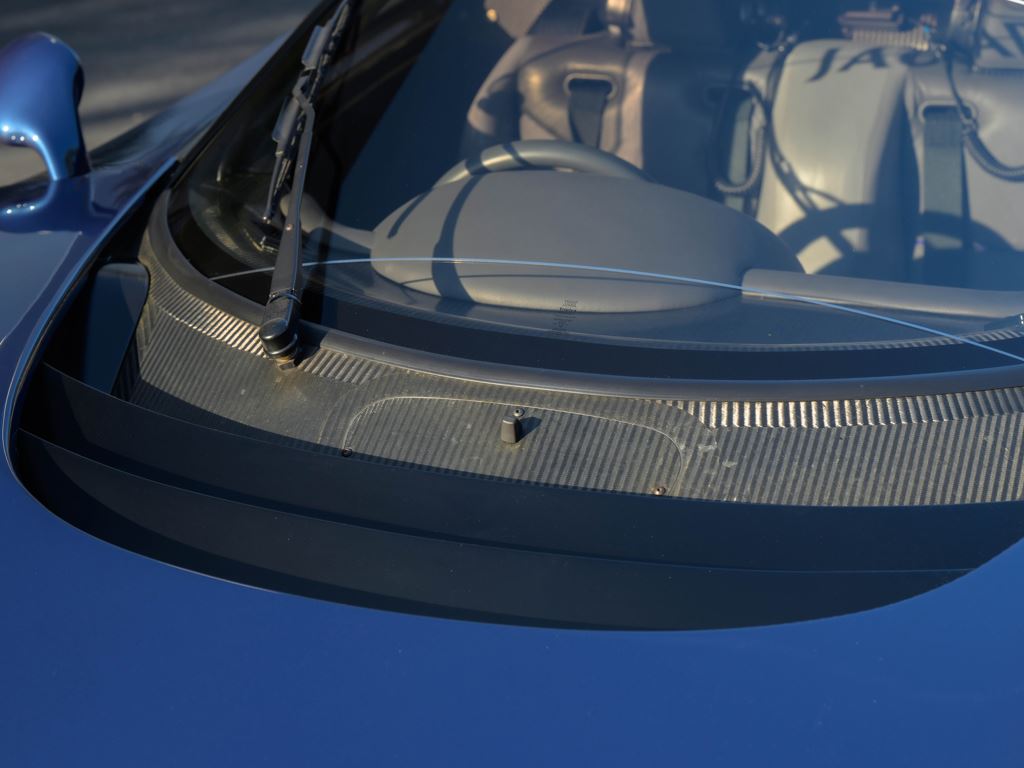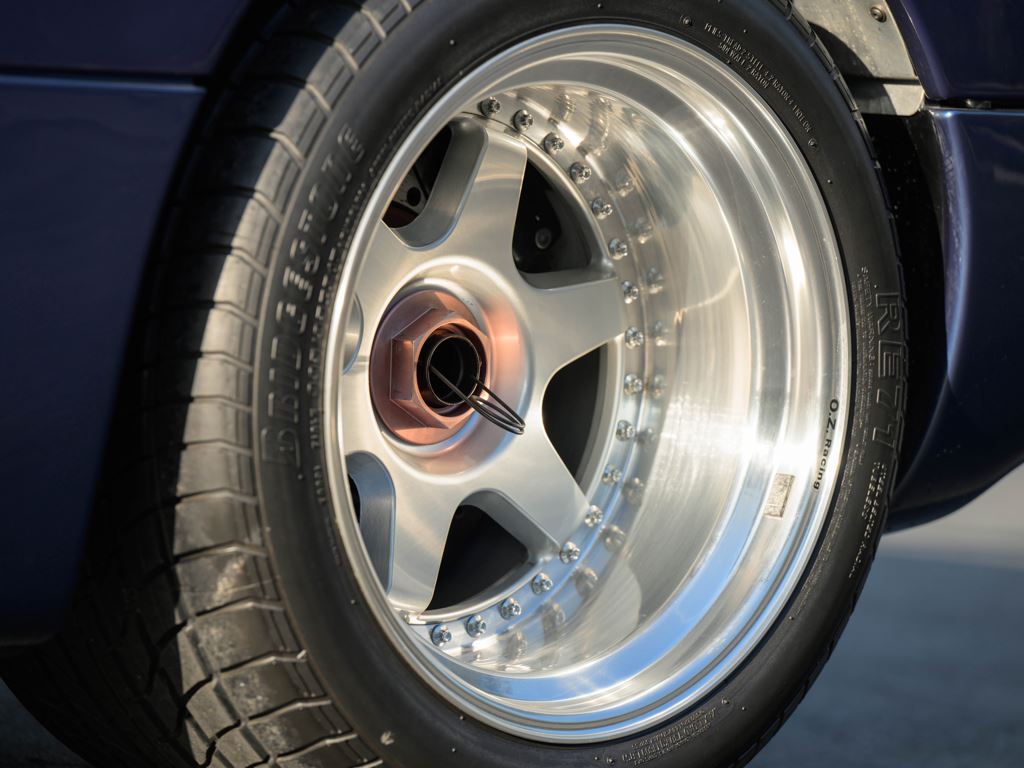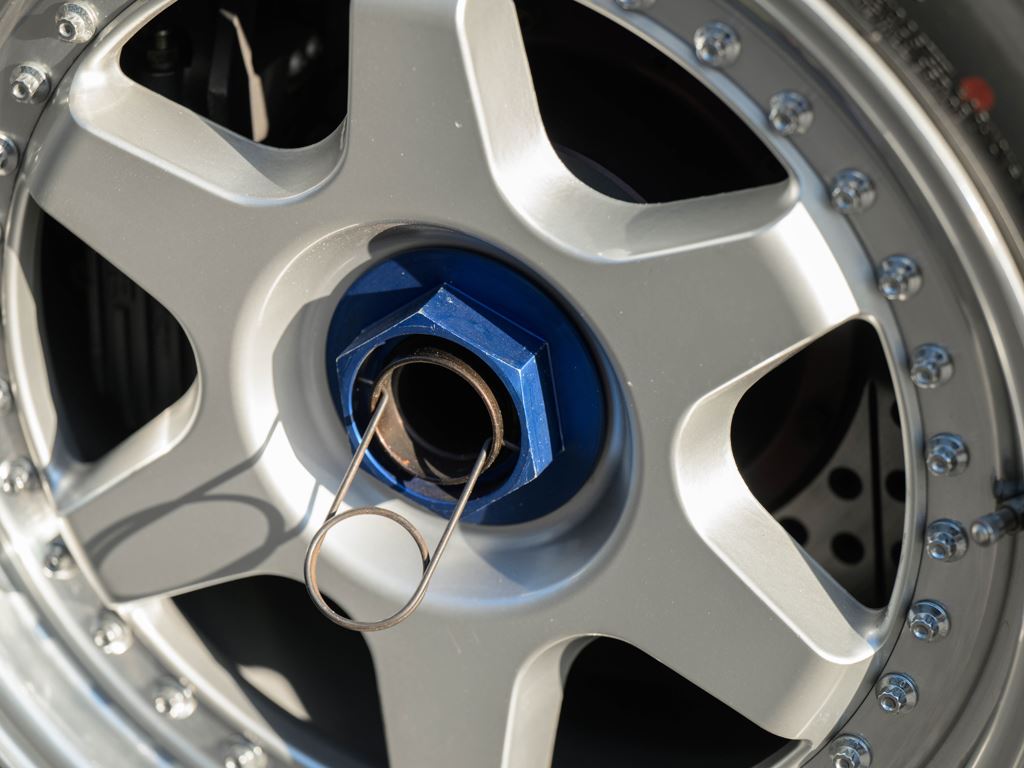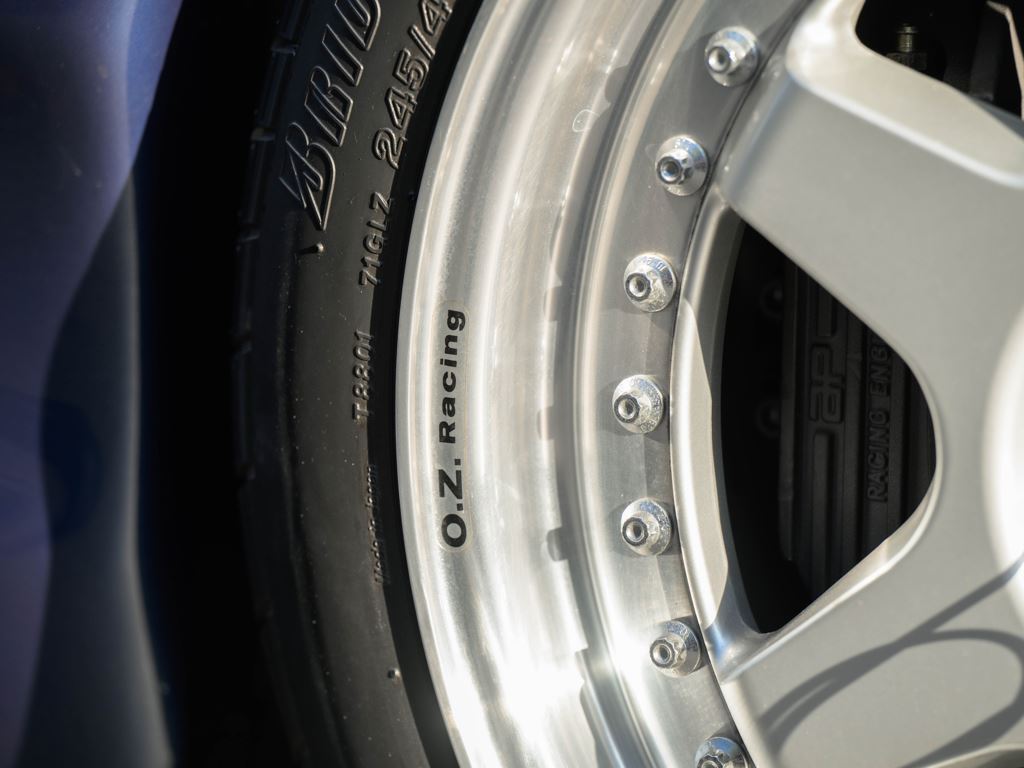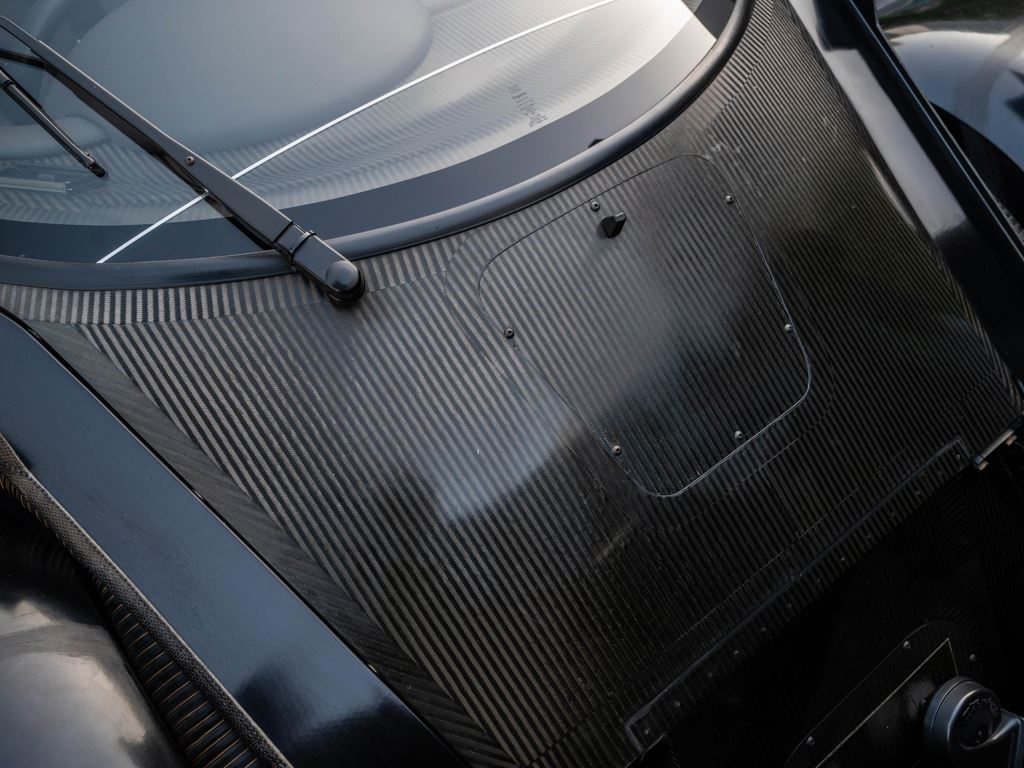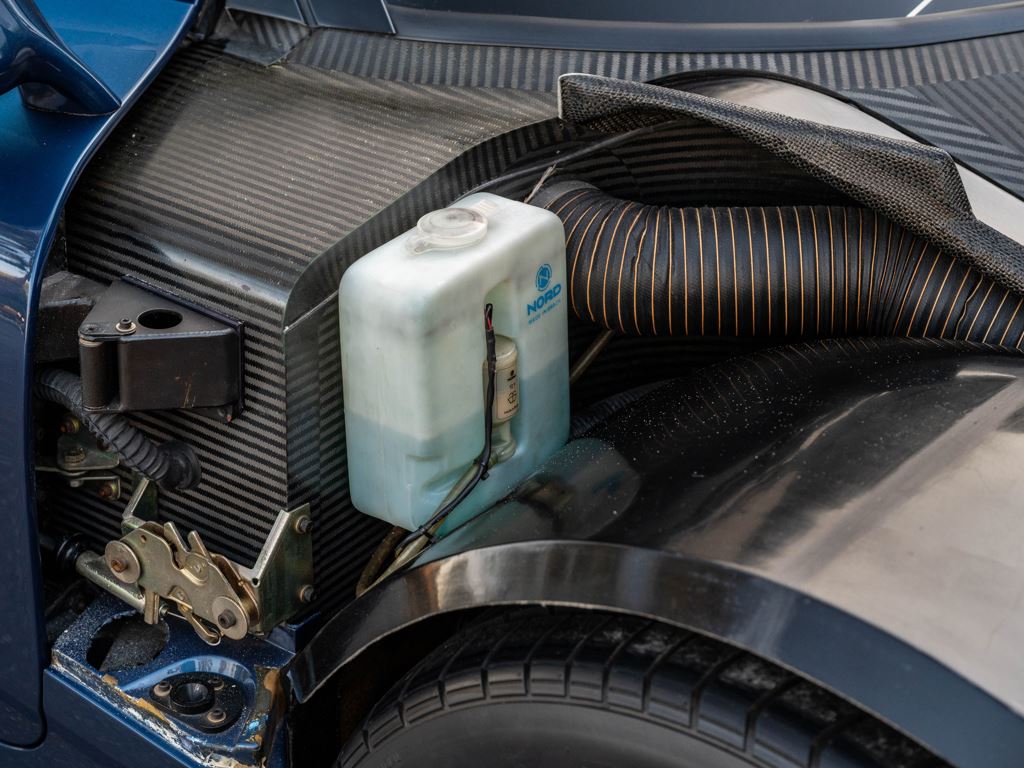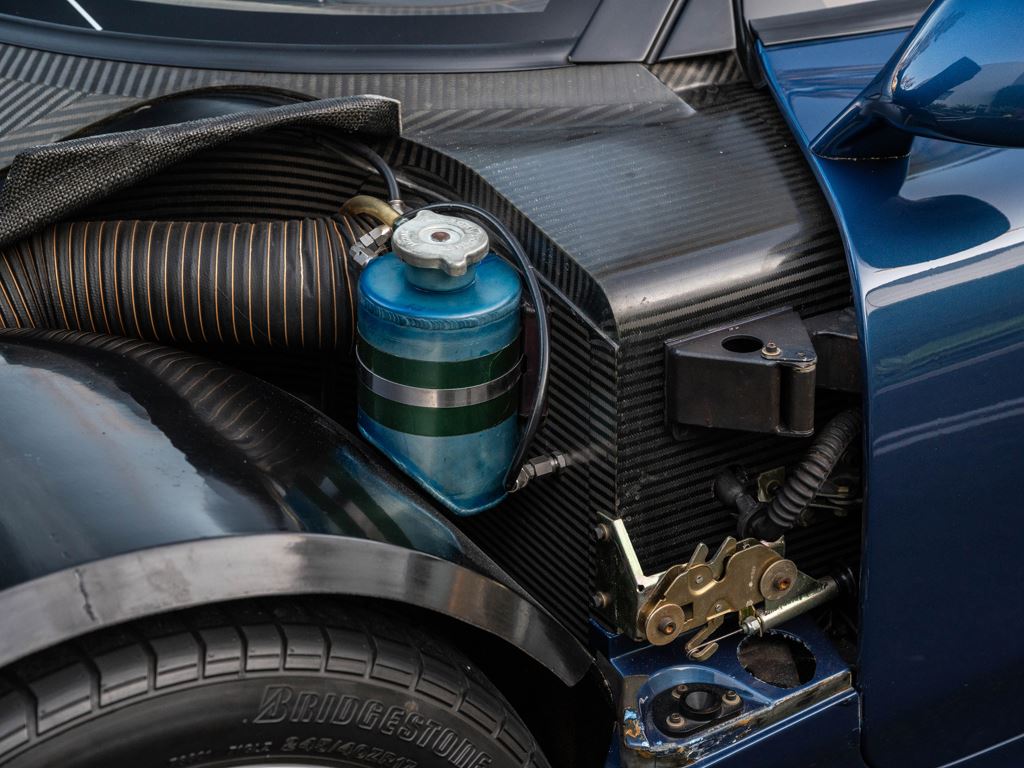Back to search results
By the mid-to-late 1980s, Jaguar had firmly reestablished itself as a force to be reckoned with in the top echelon of motorsport. Jaguar formed a partnership with Tom Walkinshaw Racing, called JaguarSport, in 1986; its objective was to compete, and win, in the same World Sportscar Championship (WSC) where Jaguar had built its racing legacy with its C-Type and D-Type racers.
Jaguar honed the performance credentials of its XJR prototype racecar platform through various model iterations. This culminated with the XJR-9 and XJR-12, which won the 1988 and 1990 editions of the 24 Hours of Le Mans. This monumental success on the track would form the building blocks for what followed from Jaguar. Demand for a roadgoing version of the XJR-9 was apparent, and so the thundering, ground-breaking XJR-15 was birthed with development by JaguarSport.
Employing a heavily tuned 6-liter, 450-horsepower version of the same V-12 engine that brought Jaguar its recent victories, and with an approximately 2,300-pound curb
weight, the XJR-15 possessed a race-bred power to weight ratio that outclassed all supercars of the era. However, the comparisons to the XJR-9 did not end there. The XJR-15 used a central monocoque chassis tub similar in concept to that of the Tony Southgate-designed, Le Mans-winning XJR-9, although this new tub, designed Jim Router and Dave Fullerton, differed somewhat in its dimensions. The body was designed by Peter Stevens, who was also responsible for the McLaren F1, and was constructed with a unique carbon fiber and Kevlar composite. Notably, this was the world’s first roadgoing car to use carbon fiber in the construction of its body and tub. The XJR-9 suspension was retained at all four wheels, with fabricated wishbones and horizontal pushrodspring dampers at the front and coil springs at the rear. Four-piston AP Racing calipers mated to disc brakes housed completely within the wheels provided stopping power.
After undergoing development tests through 1990, the car was officially launched in November of that year, built by JaguarSport in a specialized facility in Oxfordshire. In a production run that would last until 1992, Jaguar Sport would build 50 production examples of the XJR-15. Of these, only 27 of those would leave the factory in roadgoing specification, while the others followed directly in the lineage of the preceding XJR racecars and were built especially for the track.
Serial number 008, presented here, is one of the 27 XJR-15s constructed for road use. These XJR-15s were equipped with five-speed transaxles rather than the race-tuned, six-speed Le Mans gearboxes. A preservation-quality example, chassis 008 displays a mere 78 miles at the time of cataloguing. Sold new in Japan to respected collector Miura Shoji, the car was kept in a meticulously preserved state until being acquired
by an American collector in 2018. After being imported to the United States in December 2018, the car is said to have been sent to Fast Cars Limited of Redondo Beach, California for a full fluid change and general mechanical checkup. The consignor acquired the car in 2022 and, in July 2023, treated it to another complete fluid change by Fast Cars Limited.
With its carbon weave structure visible even through the paint, in addition to its clear engine cover and three-piece OZ racing wheels, the exterior delights the senses and hints at the car’s astounding performance. Inside, leather racing seats cradle the driver and passenger, with hardwired headsets for easy conversation when cruising in the triple digits. The bare, black-and-silver striped carbon fiber tub is exposed throughout the cabin, with the material framing the gauges and Nardi racing steering wheel and highlighting the unique shifter mounted up against the inner door sill.
As a rare, road-ready counterpart to the car that returned Jaguar to the top of the racing world, and displaying just 78 miles, this meticulously maintained XJR-15 certainly ranks among the finest available and is sure to make a treasured addition of any collection.To view this car and others currently available, please visit the RM website at rmsothebys.com/en/home/private-treaty-sales/.
JAGUAR XJR-15 - $POA
Price Upon Request
- Street-legal counterpart of the Jaguar XJR-9 that won the 24 Hours of Le Mans in 1988 and 1990
- One of only 50 production examples constructed; one of 27 completed in roadgoing specification
- Showing just 78 miles at time of cataloging
- First production car with a body constructed entirely of a carbon fiber and Kevlar mix
By the mid-to-late 1980s, Jaguar had firmly reestablished itself as a force to be reckoned with in the top echelon of motorsport. Jaguar formed a partnership with Tom Walkinshaw Racing, called JaguarSport, in 1986; its objective was to compete, and win, in the same World Sportscar Championship (WSC) where Jaguar had built its racing legacy with its C-Type and D-Type racers.
Jaguar honed the performance credentials of its XJR prototype racecar platform through various model iterations. This culminated with the XJR-9 and XJR-12, which won the 1988 and 1990 editions of the 24 Hours of Le Mans. This monumental success on the track would form the building blocks for what followed from Jaguar. Demand for a roadgoing version of the XJR-9 was apparent, and so the thundering, ground-breaking XJR-15 was birthed with development by JaguarSport.
Employing a heavily tuned 6-liter, 450-horsepower version of the same V-12 engine that brought Jaguar its recent victories, and with an approximately 2,300-pound curb
weight, the XJR-15 possessed a race-bred power to weight ratio that outclassed all supercars of the era. However, the comparisons to the XJR-9 did not end there. The XJR-15 used a central monocoque chassis tub similar in concept to that of the Tony Southgate-designed, Le Mans-winning XJR-9, although this new tub, designed Jim Router and Dave Fullerton, differed somewhat in its dimensions. The body was designed by Peter Stevens, who was also responsible for the McLaren F1, and was constructed with a unique carbon fiber and Kevlar composite. Notably, this was the world’s first roadgoing car to use carbon fiber in the construction of its body and tub. The XJR-9 suspension was retained at all four wheels, with fabricated wishbones and horizontal pushrodspring dampers at the front and coil springs at the rear. Four-piston AP Racing calipers mated to disc brakes housed completely within the wheels provided stopping power.
After undergoing development tests through 1990, the car was officially launched in November of that year, built by JaguarSport in a specialized facility in Oxfordshire. In a production run that would last until 1992, Jaguar Sport would build 50 production examples of the XJR-15. Of these, only 27 of those would leave the factory in roadgoing specification, while the others followed directly in the lineage of the preceding XJR racecars and were built especially for the track.
Serial number 008, presented here, is one of the 27 XJR-15s constructed for road use. These XJR-15s were equipped with five-speed transaxles rather than the race-tuned, six-speed Le Mans gearboxes. A preservation-quality example, chassis 008 displays a mere 78 miles at the time of cataloguing. Sold new in Japan to respected collector Miura Shoji, the car was kept in a meticulously preserved state until being acquired
by an American collector in 2018. After being imported to the United States in December 2018, the car is said to have been sent to Fast Cars Limited of Redondo Beach, California for a full fluid change and general mechanical checkup. The consignor acquired the car in 2022 and, in July 2023, treated it to another complete fluid change by Fast Cars Limited.
With its carbon weave structure visible even through the paint, in addition to its clear engine cover and three-piece OZ racing wheels, the exterior delights the senses and hints at the car’s astounding performance. Inside, leather racing seats cradle the driver and passenger, with hardwired headsets for easy conversation when cruising in the triple digits. The bare, black-and-silver striped carbon fiber tub is exposed throughout the cabin, with the material framing the gauges and Nardi racing steering wheel and highlighting the unique shifter mounted up against the inner door sill.
As a rare, road-ready counterpart to the car that returned Jaguar to the top of the racing world, and displaying just 78 miles, this meticulously maintained XJR-15 certainly ranks among the finest available and is sure to make a treasured addition of any collection.To view this car and others currently available, please visit the RM website at rmsothebys.com/en/home/private-treaty-sales/.
- 0 Miles
AUTOMATIC
RHD
- RefCode: E6F97ADA-8D19-6888-96A5-A9ADE515C0F1
